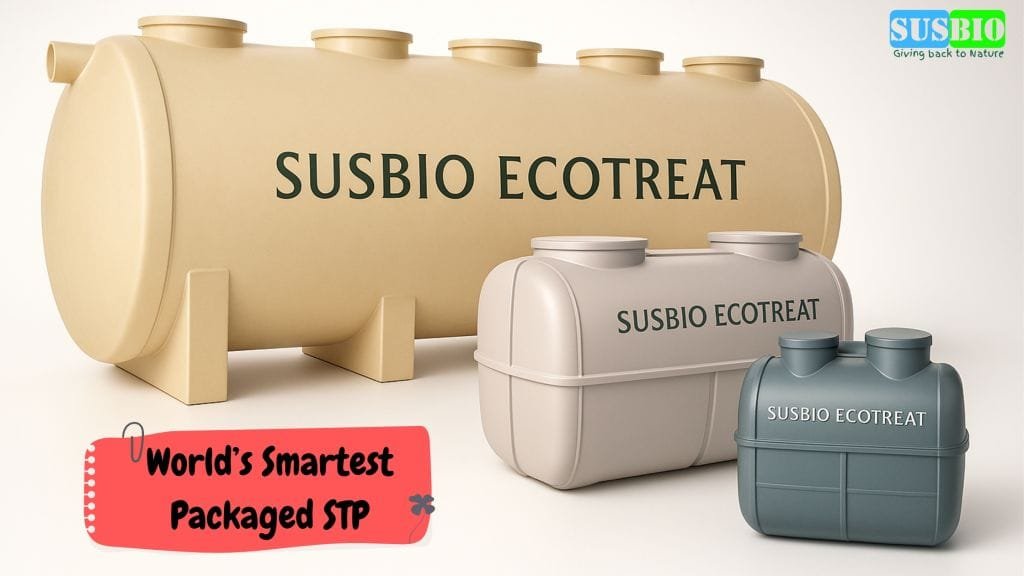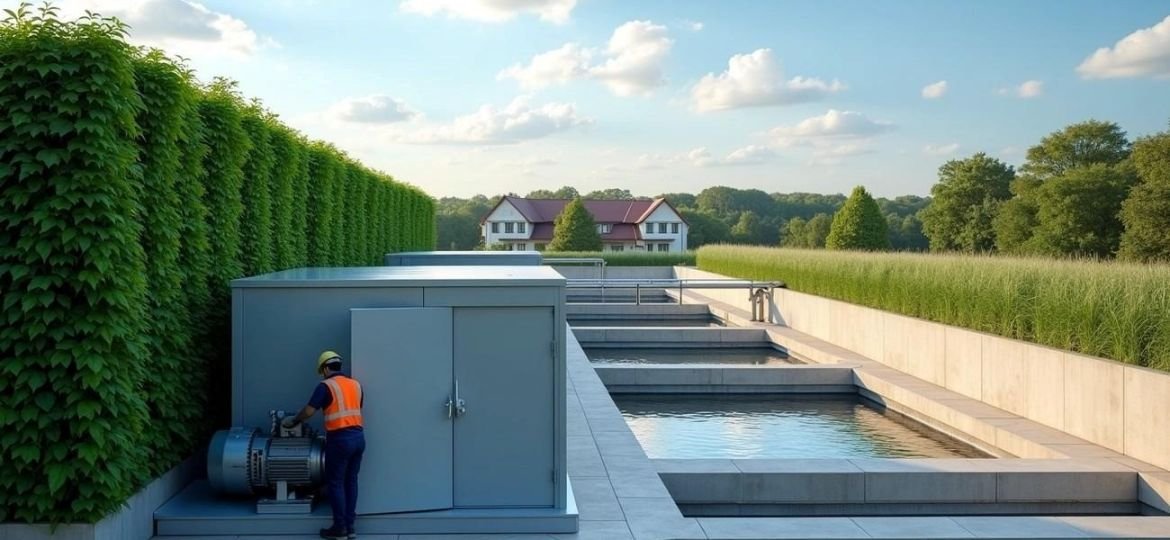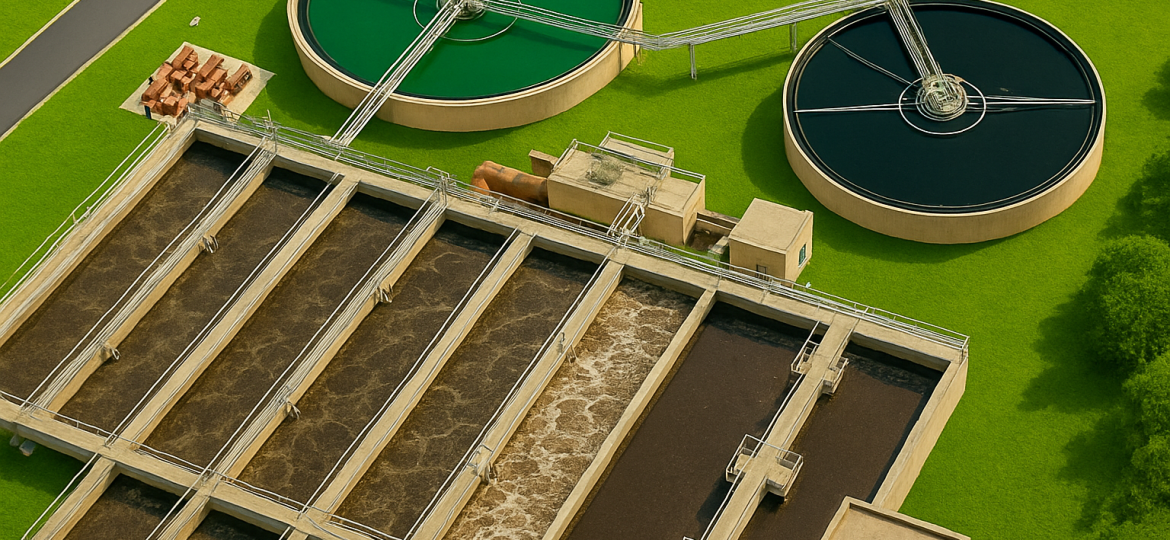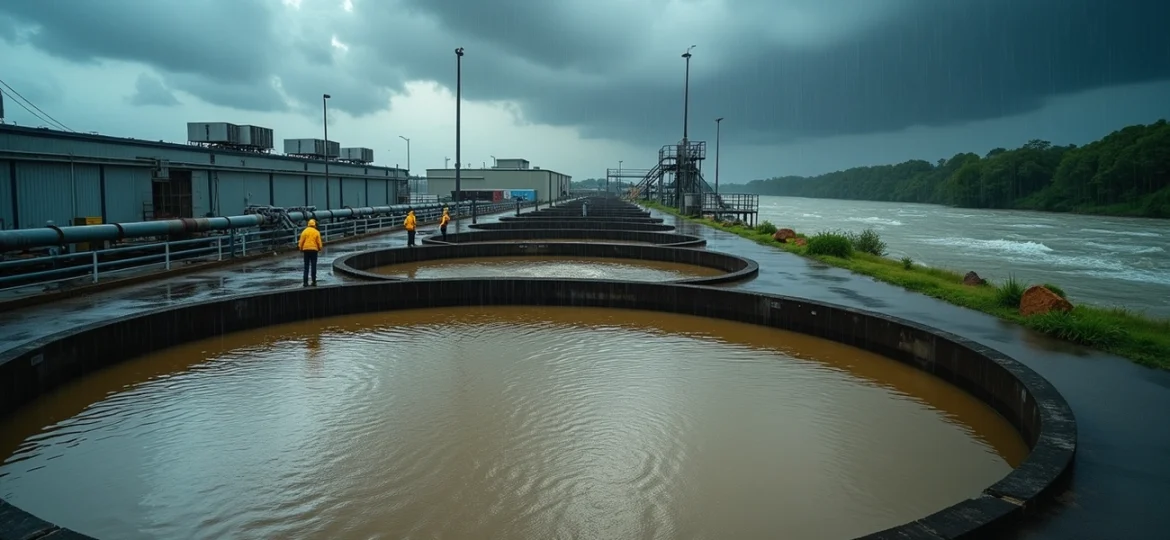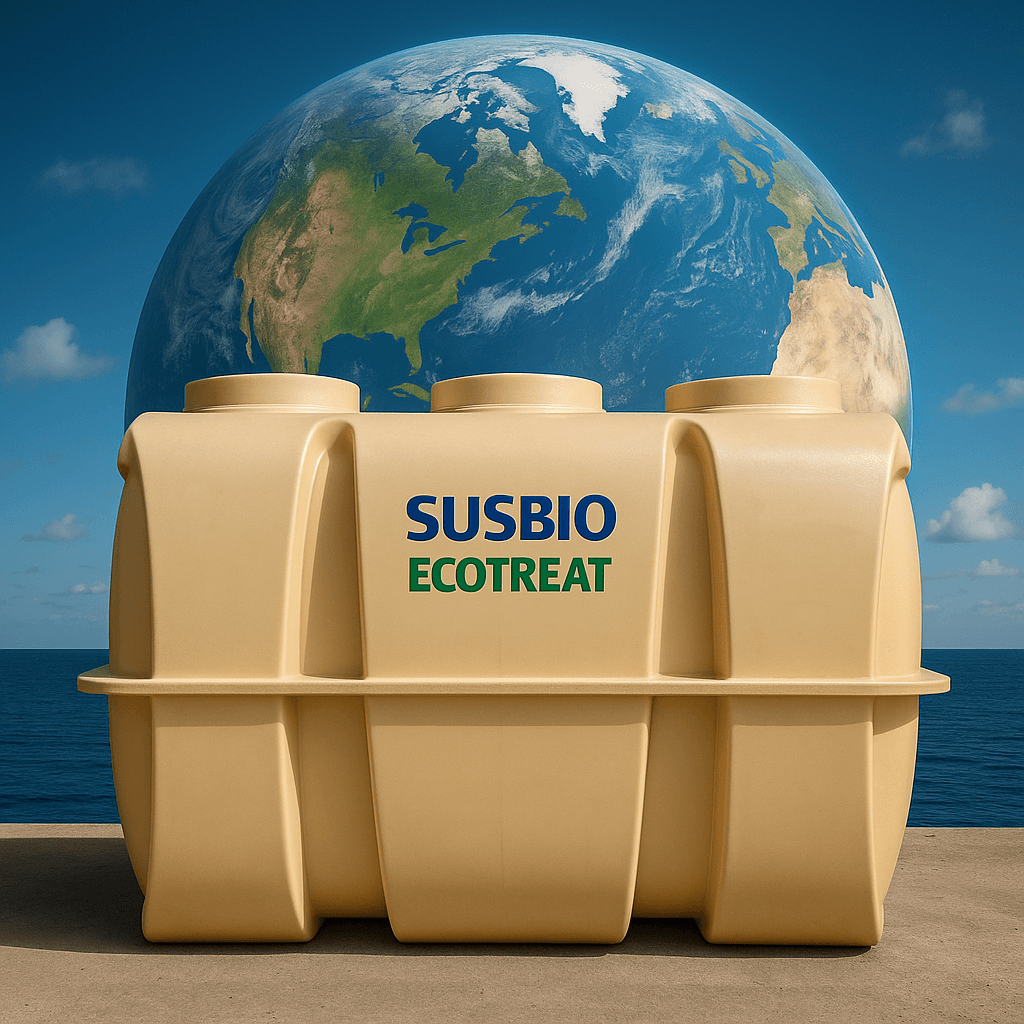India’s water bodies face direct pollution from 40,527 Million Liters per Day (MLD) of untreated sewage. The economic and environmental impact we miss from proper wastewater treatment is huge . Traditional aeration methods use 25% to 60% of a treatment plant’s energy, which makes the need for smarter, economical solutions more pressing than ever .
Manufacturers can turn waste into value through effective sewage treatment plants . The latest treatment facilities use multistep processes that remove impressive amounts of pollutants—up to 94.6% for COD, 99.8% for NH3-N, 86.5% for TP, and 98.0% for TN . Modern technologies reduce electricity use by 11.4% and cut down chemical consumption by a lot .
Water shortages will affect about 284 large cities worldwide by 2050, making wastewater treatment plants’ environmental benefits vital . SUSBIO ECOTREAT, India’s most advanced packaged STP, shows promise to help close the gap between our current treatment capacity of 31,841 MLD and the 72,368 MLD of sewage that major Indian cities generate .
This piece explores how measuring wastewater treatment’s true value reveals benefits beyond cost savings. These benefits include protecting our environment, recovering resources, and managing water sustainably for 2025 and beyond.
Modernization Trends in Wastewater Treatment Plants
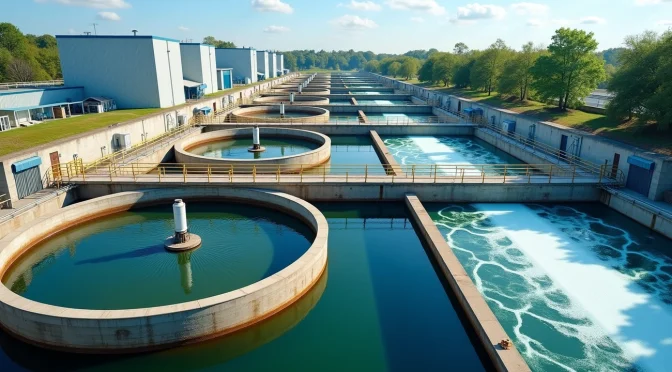
Wastewater treatment facilities are seeing remarkable progress as they respond to stricter regulations and growing environmental concerns. The industry has changed from traditional secondary treatment to more complete tertiary processes that produce higher quality effluent.
Change from Secondary to Tertiary Treatment Standards
Secondary treatment depends on activated sludge processes. New standards need tertiary treatment to improve filtration. This transformation helps remove persistent contaminants like opioids that secondary treatment can’t fully eliminate. UV disinfection has become an ideal solution for both treatment levels and neutralizes chlorine-resistant microorganisms like Cryptosporidium and Giardia. Water clarity relates directly to UV treatment effectiveness. Tertiary-treated water with 65-85% UV transmittance needs less equipment than secondary-treated water.
Adoption of Membrane Bioreactors (MBR) and IFAS
Membrane bioreactors are a breakthrough in wastewater processing that combines membrane filtration with biological treatment. The MBR market shows this technology’s value and grows at 22.4% annually with projections reaching USD 290.27 billion by 2018. These systems create effluent suitable for ocean discharge, irrigation, or industrial reuse. IFAS systems blend suspended and attached growth methods to improve treatment capacity. The system achieves year-round nitrification with very long sludge retention times and improves system reliability. SUSBIO ECOTREAT leads India’s advanced packaged STP market by using advanced biofilm technology and modular design for future-ready wastewater treatment.
Digital Twins and Remote Monitoring Integration
The wastewater sector now embraces digital twin technology – virtual replicas of physical plants that enable live simulation and optimization. Industry 4.0 technologies with smart sensors and IoT devices allow continuous monitoring of water quality, equipment performance, and energy use. Remote terminal units with specialized sensors track critical parameters including flow rate, water levels, and equipment conditions. These systems create automatic reports and alerts that provide 100% visibility of processes from anywhere. AI implementation in treatment plants will increase from 10-15% to 25-30% by 2025, which is a big deal as it means better compliance and environmental stewardship.
Smart Technologies Driving Efficiency in 2025

The digital world of wastewater treatment in 2025 features innovative technologies that optimize efficiency and reduce resource use. Smart solutions now create unprecedented economic and environmental benefits for treatment facilities worldwide.
SUSBIO ECOTREAT: Modular, Flexible, and Future-ready
SUSBIO ECOTREAT stands as India’s most advanced packaged STP that uses durable fiber-reinforced plastic construction to ensure strength and longevity. This prefabricated system combines anaerobic and aerobic treatment processes to remove pollutants and contaminants effectively. The plant’s innovative design brings several benefits:
90% energy efficiency compared to conventional systems
Fully automated operation that needs no on-site staff
Modular construction that allows easy scaling based on capacity needs
UV Disinfection for Pathogen Removal
UV disinfection has become a chemical-free solution for eliminating pathogens in wastewater. Mercury arc lamps transfer electromagnetic energy to destroy microorganisms’ genetic material and prevent reproduction. This technology inactivates bacteria, viruses, and parasites without chemical additives. Scientists once thought it ineffective against Cryptosporidium, but recent UV technology advances now make it highly effective against these protozoans.
High-efficiency Aeration Systems with Sensor Feedback
Modern aeration systems serve two purposes: they provide oxygen to microorganisms and ensure thorough mixing of the treatment medium. Fine-bubble aeration technology creates smaller bubbles with greater surface area to improve oxygen transfer efficiency and reduce energy consumption. Smart controls now adjust operations automatically based on up-to-the-minute water quality parameters.
Hybrid Treatment Systems Combining MTS and NTS
Hybrid treatment systems mark the next development in environmentally responsible wastewater solutions by integrating Mechanized Treatment Systems (MTS) with Natural Treatment Systems (NTS). This approach uses the strengths of both technologies — MTS removes biodegradable pollutants while NTS excels at nutrient reduction. The combined process minimizes waste generation, cuts energy consumption by 40–60%, and ensures treated water meets high environmental standards. These systems work especially well for industries with high-strength organic waste, such as food processing, dairy, and pharmaceuticals.
Economic and Operational Benefits of Smart Upgrades
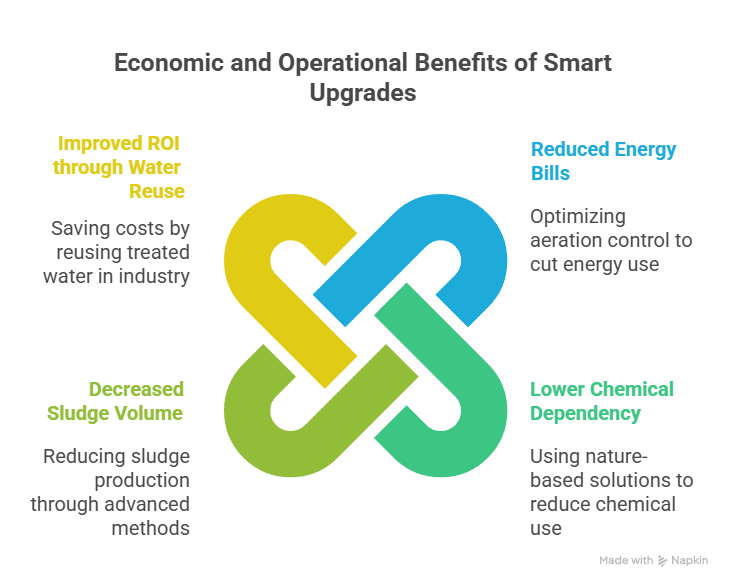
Smart upgrades in wastewater treatment create significant economic returns by tackling major operational costs. Many facilities see immediate benefits from advanced technologies that multiply as time passes.
Reduced Energy Bills via Smart Aeration (Up to 20%)
Aeration systems use 50–70% of a treatment plant’s total energy budget. SUSBIO ECOTREAT, India’s most advanced packaged STP, tackles this challenge with optimized aeration control that adjusts based on immediate oxygen needs. Control algorithms minimize energy loss in aeration processes while maintaining effluent quality standards. High-efficiency fine bubble diffusers boost oxygen transfer rates by 15–30% compared to traditional systems. Plants can cut energy use to about 64.6% of normal operations by combining high-efficiency motors with smart instrumentation.
Lower Chemical Dependency in Tertiary Treatment
Traditional tertiary treatments work well but rely heavily on chemical processes that drive up operational costs. Nature-based solutions now match the removal efficiency for stubborn pollutants with less environmental impact. UV disinfection eliminates the need for chlorination chemicals. Sand, activated carbon, and zeolite filtration systems cut chemical needs while removing contaminants effectively.
Decreased Sludge Volume and Handling Costs
Sludge management makes up 40–60% of total plant operational costs. In-line sludge disintegration (physical, chemical, and thermal) can cut excess sludge production by up to 30%. Anaerobic digestion cuts COD by about 60%, which leads to much less final sludge production. Hybrid treatment methods that combine mechanical and biological processes have shown sludge reduction of up to 78%.
Improved ROI through Water Reuse in Industry
Water reuse creates a positive cycle that makes production processes more economical. On-site water treatment for reuse pays for itself in less than three years through savings on raw water purchases and wastewater discharge fees. Life-cycle cost analysis needs to cover all capital, operating, and risk mitigation factors over the system’s lifetime. Selective contaminant removal remains the most budget-friendly choice for industrial reuse applications, despite upfront costs.
Environmental and Community Gains
Proper wastewater management impacts far beyond the reach and influence of treatment facilities, extending into surrounding ecosystems and communities. Environmental and social benefits often outweigh the economic advantages.
Cleaner Discharge into Surface Waters
Rivers, lakes, and oceans suffer severe disruption when untreated wastewater introduces harmful chemicals, nutrients, and pathogens. Modern treatment systems like SUSBIO ECOTREAT remove contaminants effectively and ensure only clean water enters the environment. This protection stops eutrophication — the oxygen-depleting algal growth that destroys aquatic life.
Reduced Public Health Risks from Untreated Effluent
Wastewater contains harmful bacteria, viruses, and chemicals that cause serious illnesses like E. coli and noroviral infections without proper treatment. Treatment facilities create a vital barrier between human waste and public water bodies. However, only about half of global on-site treatment systems manage collected wastewater safely, highlighting an ongoing public health challenge.
Support for Circular Economy via Resource Recovery
Treatment facilities extract valuable materials from wastewater during the process. Modern plants recover phosphorus, nitrogen, and biogas for energy production. India’s most advanced packaged STP, SUSBIO ECOTREAT, demonstrates this approach by incorporating resource recovery into its future-ready design.
Enhanced Public Perception and Regulatory Trust
Public acceptance is a vital factor for wastewater reuse projects. Communities support initiatives that demonstrate water conservation, environmental protection, and human health safeguards. Advisory boards and transparent communication help build confidence and trust through meaningful citizen involvement.
Conclusion
Smart wastewater treatment solutions will become our most powerful tools against growing water challenges by 2025. The progress from secondary to tertiary treatment standards and breakthroughs like membrane bioreactors and digital twins have reshaped our management of this vital resource.
The numbers tell a compelling story. Smart aeration cuts energy use by 20%. Chemical dependency has decreased. Sludge handling costs less now. These improvements deliver strong returns on investment. The environmental benefits reach beyond treatment facilities. Surface waters stay protected and public health risks drop in surrounding ecosystems and communities.
SUSBIO ECOTREAT leads India’s advanced packaged STP market. This future-ready solution bridges the gap between treatment capacity and sewage generation. Its modular design achieves 90% energy efficiency and recovers resources effectively.
The most successful facilities will treat wastewater as a valuable resource. Circular economy approaches combined with hybrid treatment systems can tackle economic, environmental, and social challenges together. Smart upgrades are nowhere near just cost-saving measures – they build sustainable foundations for water management that future generations will benefit from.
Key Takeaways
Smart wastewater treatment upgrades in 2025 deliver measurable economic returns while addressing critical environmental challenges. Here are the essential insights for maximizing treatment benefits:
- Energy savings reach 20% through smart aeration systems that adjust oxygen delivery based on real-time demand, significantly reducing operational costs.
- Advanced technologies like SUSBIO ECOTREAT achieve 90% energy efficiency with modular, scalable designs that eliminate on-site staffing requirements.
- Tertiary treatment systems remove up to 94.6% of COD and 99.8% of ammonia while reducing chemical dependency through UV disinfection and nature-based solutions.
- Resource recovery creates circular value by extracting phosphorus (up to 90%), nitrogen, and biogas from wastewater, transforming waste into profitable resources.
- Hybrid treatment approaches combining mechanical and biological processes reduce sludge production by up to 78%, dramatically cutting handling costs.
The transition from viewing wastewater as waste to recognizing it as a valuable resource represents the future of sustainable water management, offering both immediate cost savings and long-term environmental protection.
Frequently Asked Questions
Q1. What are the main benefits of upgrading to smart wastewater treatment systems?
Smart wastewater treatment upgrades offer multiple benefits, including reduced energy consumption (up to 20% savings), lower chemical dependency, decreased sludge handling costs, and improved water quality for discharge or reuse. These systems also support resource recovery and contribute to a circular economy approach.
Q2. How does SUSBIO ECOTREAT differ from conventional wastewater treatment plants?
SUSBIO ECOTREAT is India’s most advanced packaged STP, offering 90% energy efficiency compared to conventional systems. It features modular construction for easy scaling, fully automated operation requiring no on-site staff, and combines anaerobic and aerobic treatment processes for effective pollutant removal.
Q3. What role does UV disinfection play in modern wastewater treatment?
UV disinfection is a chemical-free solution for pathogen elimination in wastewater. It uses electromagnetic energy to destroy microorganisms’ genetic material, effectively inactivating bacteria, viruses, and parasites without chemical additives. This technology is particularly effective against chlorine-resistant organisms like Cryptosporidium and Giardia.
Q4. How do hybrid treatment systems improve wastewater management?
Hybrid treatment systems combine Mechanized Treatment Systems (MTS) with Natural Treatment Systems (NTS), leveraging the strengths of both technologies. This approach effectively removes biodegradable pollutants and nutrients, minimizes waste generation, reduces energy consumption by 40-60%, and ensures treated water meets high environmental standards.
Q5. What are the environmental and community benefits of advanced wastewater treatment?
Advanced wastewater treatment provides cleaner discharge into surface waters, preventing eutrophication and protecting aquatic ecosystems. It also reduces public health risks associated with untreated effluent, supports resource recovery for a circular economy, and enhances public perception and regulatory trust through improved water management practices.


